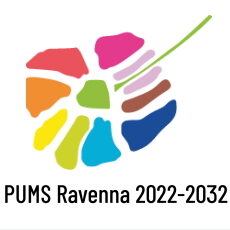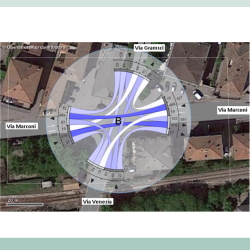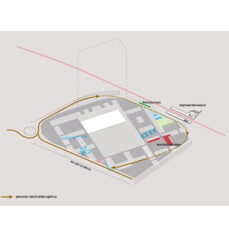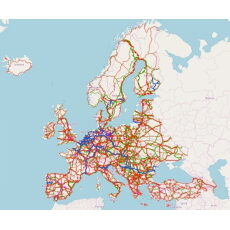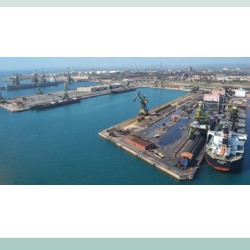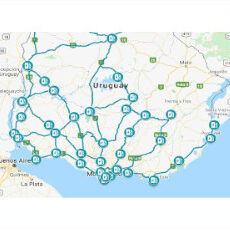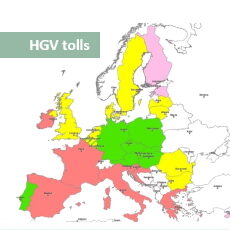- All
- African projects
- assessment
- assessment selected projects
- Assessment selected projects 2
- Assessment selected projects 3
- Assessment selected projects 4
- ASTRA
- Cost Benefit Analysis
- Electric mobility and ITS
- MOMOS
- planning
- planning selected projects
- planning selected projects 2
- planning selected projects 3
- planning selected projects 4
- planning selected projects 5
- projects
- Railways projects
- research
- research selected projects
- research selected projects 2
- research selected projects 3
- studies
- studies selected projects 1
- studies selected projects 2
- studies selected projects 3
- studies selected projects 4
- studies selected projects 5
- TRTingegneria
- TRUST
- urban mobility
- Analysis of ITS applications and solutions at logistics nodes Ursa Major neo project is co-financed by the Connecting Europe Facility of the European Union. The main goal of UMneo is to identify the best ITS solutions to interconnect the logistic nodes (ports and freight villages) and arches (road networks) for sharing each other information about traffic conditions or allow operators to book in advance some specific services. ITS (Intelligent Transport Systems) are known to be effective for several applications in the entire supply chain, e.g. for reducing congestions at gate terminals or along the road, for saving time and costs, for reducing the environmental footprint of logistics activities, etc. The Italian partners involved in UMneo are the ports of La Spezia, Livorno, Ravenna, Trieste, Venezia, the freight village of Verona and the road network operators ANAS S.p.A, Autovie Venete S.p.A., Autobrennero S.p.A. and Autostrade per l’Italia S.p.A. TRT was commissioned by RAM to describe the state of the art about ITS services and systems applied or planned in ports and freight villages infrastructures involved in the Ursa Major Neo project, pointing out the most relevant best practices. Final results come both from desk-analysis and specific interviews that TRT performed with the involved partners. For more information: Ursa Major Neo project Objectives of the Ursa Major project on NeoAutobrennero S.p.A. website
- SLOWMOVE – A study on the development of e-mobility in the waterway between Locarno and Milan TRT, together with Ambiente Italia, was entitled by Novara Province to develop a study within the INTERREG project «SLOWMOVE Ponti d’acqua verso il futuro. Lo sviluppo del trasporto lungo il Lago Maggiore, il Ticino ed il sistema dei canali secondo una prospettiva di rispetto ambientale e di incremento del turismo green» (SLOWMOVE Water bridges towards future. Development of the territory along Maggiore lake, Ticino river and canals in a perspective of environmental protection and development of green tourism). The first phase of this study was focusing on supply of charging stations and other electrified modes of transport. Moreover, it provided an overview of the area by linking together demographic data, tourist attractions, tourism statistics, etc. Furthermore, a legislative analysis was included for both Italy and Switzerland, regarding inner water navigation, e-mobility and its charging standards together with an overview of planning documentation. The second phase consisted in the formulation of three different scenarios (high, medium and low) that tried to foresee the development of the charging station infrastructure. Those scenarios were evaluated by local stakeholders with a participative process. Eventually, a third phase included an economical and an environmental impact of the identified scenarios. The first one evaluated the investment cost for every scenario and the demand characteristics. The second compared environmental performances of traditional and electric mobility and it estimated emission reduction. For more information (available only in italian) Press release about Slowmove workshop “La vocazione del territorio di Slowmove per la mobilità sostenibile lungo l’idrovia. L’indotto economico legato alla fruizione turistica e allo sviluppo del settore” (The vocation of the Slowmove area for sustainable mobility along the waterway. The economic impact of tourism and its development) YouTube video of Slowmove workshop “La vocazione del territorio di Slowmove per la mobilità sostenibile lungo l’idrovia. L’indotto economico legato alla fruizione turistica e allo sviluppo del settore” (The vocation of the Slowmove area for sustainable mobility along the waterway. The economic impact of tourism and its development) The report published on Novara Province website The program of the conference “Waterway & Mobility State of the Art, Results and Perspectives” (“Idrovia&Mobilità Stato dell’arte, risultati e prospettive”) and its presentations (in italian) The program of the conference “A lighthouse on the waterway” (“Un faro sull’idrovia” in italian) and the video of the first part of the event, during which TRT presented its cotribution (in italian).
- Sustainable Urban Mobility Plan (SUMP) of Ravenna (Italy) and sectorial mobility plans As a result of a tendering procedure, TRT Trasporti e Territorio, in association with META Mobilità Economia Territorio Ambiente and ITL Istituto sui Trasporti e la Logistica, has been selected by the City of Ravenna to prepare their Sustainable Urban Mobility Plan (SUMP) and the related sectorial mobility plans. Team’s activity is focussed on the preparation of the following documents, among other: Sustainable Urban Mobility Plan, which is articulated in several methodological steps related to: 1) monitoring and assessment of the current SUMP’s results; 2) background analysis of the mobility-related framework and its environmental, social and economic impact in Ravenna; 3) identification of the strategies for the construction of the SUMP scenarios; 4) design of detailed alternative scenarios for the SUMP; 5) evaluation procedure, implementing a ex ante transport model (VISUM). The environmental sustainability of the SUMP is verified through the application of the SEA procedure. Public Transport Plan, coherently developed with the SUMP, which includes a technical and economic feasibility study for the implementation of a low- or zero-emissions public transport system. General Urban Traffic Plan, prepared from objectives, strategies and measures previously defined in the selected short-term scenario of the SUMP. Urban Parking Plan, Functional Classification of the Road Network, Electric Mobility Plan, Road Safety Plan, Cycling Mobility Plan, Strategic document on urban logistics. The drafting of the Plans makes use of innovative methods for the quantification of Ravenna’s transport demand (for example, using data derived from the analysis of the cellular network), which are flanked by more traditional site surveys (vehicle counts, origin-destination surveys, counts on PT lines and at stops, etc.). Finally, all phases are accompanied by a vast communication and participation campaign, which sees the involvement of citizens and stakeholders through public meetings and online questionnaires.
- Application of a microsimulation model to evaluate different hypotheses for the reconfiguration of some road junctions in the municipality of Sorbolo The transport study considers different design alternatives to resolve critical issues concerning the Provincial road 62R in Sorbolo Mezzani, a small municipality in the Province of Parma. The transport study was conducted through the construction and application of a traffic microsimulation model using PTV Vissim software. The aim of the project was to evaluate, in transport terms, the different hypotheses for the reconfiguration of the nodes in the small municipality. The simulations were carried out wit respect to both morning and evening pick hours. The following activities were carried out: Acquisition of demand data and realization of traffic surveys in the concerned intersections; Construction and calibration of a microsimulation model of the current status; Implementation and modelling analysis of design alternatives and evaluation of transport impacts (in terms of average and maximum queue lengths, delay in crossing the node and LoS – Level of Service) identification of the optimal design configuration.
- Design competition for the new business centre of the Sicilian Region In 2019, the Regional Sicilian Government launched a public contest for the design of its new headquarter with the idea of centralizing its different administrative functions and investee companies that are currently distributed in different locations throughout the city. The aim of the intervention is to create a hub that would reduce functional difficulties and ensure greater efficiency in the services provided to citizens and municipal administrations. This would also help cutting unnecessary trips and considerably reduce impacts in traffic and pollution. TRT Ingegneria participated to the contest with the role of mobility expert, together with a wider consortium composed by MJW Structures (Italy), MATE Engineering (Italy) and led by Xaveer De Geyter Architects (Belgium). TRT Ingegneria had the role of organising the public and private mobility system by defining the circulation scheme, the parking system, and the intramodality with the “Ugo La Malfa” railway station of the Palermo bypass. The proposal ranked among the top five over 30 participants during the first phase of the public contest, thus gaining access to the second phase of the competition.
- Impact assessment for the revision of regulation (eu) n° 1315/2013 on union guide-lines for the development of the trans-european transport network The European Union with the Green Deal (proposal EC COM(2019) 640 final) has agreed to implement the Paris Climate Agreement leading the EU towards climate neutrality in 2050. In a more detailed communication in 2020 the European Commission proposed to step-up the climate policy ambition for 2030 and reduce GHG emissions of the EU by 55% compared to 1990 (EC COM(2020) 562). For the transport sector the EC published a new smart and sustainable mobility strategy in December 2020 (EC COM(2020) 789) presenting the strategic policy framework that would deliver the GHG reductions required by the transport sector for 2030 and until 2050. As part of this highly dynamic policy framework the EC has foreseen the revision of several existing transport regulations. The revision of the TEN-T guidelines is one of the major transport related policies besides the revision of the Alternative Fuels Infrastructure and the Intelligent Transport System directives and the planned revision of the Rail Freight Corridors regulation. This study carries out the analysis accompanying the impact assessment for the revision of Regulation (EU) N° 1315/2013 on Union Guidelines for the development of the trans-European transport network. Supported by two European scale modelling tools ASTRA and TRUST, the study provides the assessment of three alternative policy options in terms of their transport, economic, social and environmental impacts and identifies the most promising one. The report is available on the website of the “Publications Office of the European Union” at this link.
- Analysis of docks’ capacity in concession to Arcelor Mittal Spa in the port of Taranto TRT has been contracted to carry out an assessment of the actual capacity of the docks taking into account the current production level of the steel plant. The need for the analysis was expressed by the AdSP Management Committee in agreement with the local authorities. Due to the significant reduction that affected the plant’s production capacity in recent years with the main consequence of the inevitable decline in port traffic, the analysis was conducted with the main objective of responding to the need for rationalization and efficiency of the logistics and port infrastructure organization. During the study, statistical data and potential future scenarios for the relaunch of the plant were considered, highlighting the existing oversizing of the docks intended for raw materials and products handling, with respect to the actual operational needs. At the end of the analysis, strategies to promote the efficient use of the docks and the functional and environmental progress of the freight handling have been included. The need for solutions with reduced environmental impact, in line with the requirements and expected performance, was also stressed.
- Technical Assistance to Develop a Business Model to Finance and Scale-up E-Mobility in Uruguay Uruguay has an emerging electric vehicle sector, with good growth prospects and a strong policy agenda on fleet electrification. The country has committed to several mitigation measures in the transport sector, such as the introduction of electric vehicles in public transport, of utility electric vehicles and the installation of the first electrical route of Latin America connecting Colonia-Montevideo-Chui. The main objective of this project is to provide a policy and regulatory guide for a smooth transition to e-mobility in Uruguay and help the country to achieve an efficient and sustainable transport decarbonisation, through: Diagnosis of the current infrastructure and regulatory situation of e-mobility; Assessment of the several pilot projects already developed; Identification of desired business models and financing scheme for e-buses and private EVs; Propose a policy and regulatory guide to achieve overall e-mobility expansion targets in a time-line consistent with Uruguayan Nationally Determined Contributions (NDCs) to the Paris Agreement objectives; Propose a consistent and sustainable body of fiscal incentives and subsidies to favour and promote the previous e-mobility targets. The project is carried out by an international consortium led by MRC Consultants and Transaction Advisers (ES) and composed by TRT (IT) and SEG Ingeniería (UY). TRT is specifically involved in the project component related to private e-mobility, as well as in the fiscal impact assessment to proposed measures and policies. The project will provide a set of outputs including: E-bus financing alternative sschemes with estimated cost impact, timeframe, and impact on rolling stock; Assessment of long-term fiscal impact and ways to ensure efficiency and sustainability of alternative schemes; Regulatory and fiscal incentive schemes to sustainably increase use of private e-vehicles; Long-term fiscal impact analysis of incentives and tax revenues from foregone taxes, and elaborate recommendations; Two public workshops and related materials available for knowledge sharing.
- Assessment of infrastructure costs calculation, tolls calculation and variation for heavy goods vehicles in Member States Directive 1999/62/EC and following amendments provide the legal framework for the application of toll charges to heavy vehicles in the EU, stipulating that road infrastructure charging shall be based on the recovery of infrastructure costs and of traffic-related externalities. Before implementing or amending tolling arrangements, Member States must provide the Commission with a detailed description of the new system. As contractor of the FWC, TRT verifies whether the tolling arrangement notified to the Commission fully respects the provisions of the Directive. The methodology applied for the assessment includes: determination of the scope of the tolling scheme notified by the Member State; identification of costs eligible to be recovered through tolls; allocation of infrastructure costs across vehicles categories; calculation of the weighted average tolls and cost recovery rate. In its assessment reports, TRT provides sound and evidence‐based analyses of the methodology used for infrastructure costs calculation, assessment of compliancy with the Directive’s core principles, as well as recommendations for possible modifications and improvements. Thus far TRT has assessed nine cases, including tolling arrangements from Italy, Spain, France, Bulgaria, Poland and Hungary.



